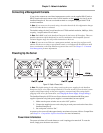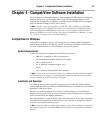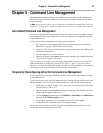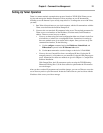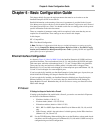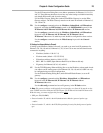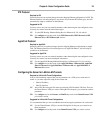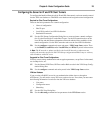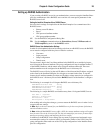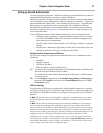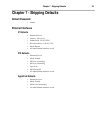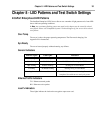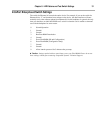
Chapter 6 - Basic Configuration Guide 25
Configuring the Server for IP and IPX Client Tunnels
To configure the IntraPort Enterprise-8 for IP and IPX client tunnels, each user must be entered
into the VPN user database or a RADIUS server database and assigned a tunnel configuration.
Required for Client Tunnel Configurations
These are the basic parameters for a tunnel configuration:
• Name of configuration
• Bind To port
• Local IP Net and/or Local IPX Net Number
• Reachable IP networks
CV: Use the VPN Group Configuration Dialog Box to create and name a tunnel configura-
tion. Use the General tab to set the Bind To port. Use the IP Connection tab to set the
Local IP Net and add IP network numbers and masks which will be reachable via the
tunnel configuration. Use the IPX Connection tab to set the Local IPX Net Number.
TB: Use the configure command and create and name a VPN Group Name section. Then
set the BindTo, LocalIPNet and/or LocalIPXNet, and IPNet keywords in that section.
v Note: The IP network or subnet specified as the Local IP Network or subnet must not
conflict with networks specified in other VPN Group configurations/VPN Groups or with any
other IP address within the server.
Suggested for Client Tunnel Configurations
You may want to change authentication and encryption parameters, set up filters for the tunnel,
set a backup device, etc.
CV: Use the General, IPX Filters, IP Filters and/or Rollover tabs in the VPN Group Config-
uration Dialog Box.
TB: Use the configure command and set keywords in the VPN Group Name section.
VPN User Database
If you are using a RADIUS server for user authentication (either alone or through an
ACE/Server), you will need to set up VPN users on those servers. If not, then you must enter
the following information for each user into the VPN user database:
• User name
• Configuration name
• Shared key
CV: Use the VPN User Dialog Box.
TB: Use the edit config command and set parameters in the VPN Users section.



